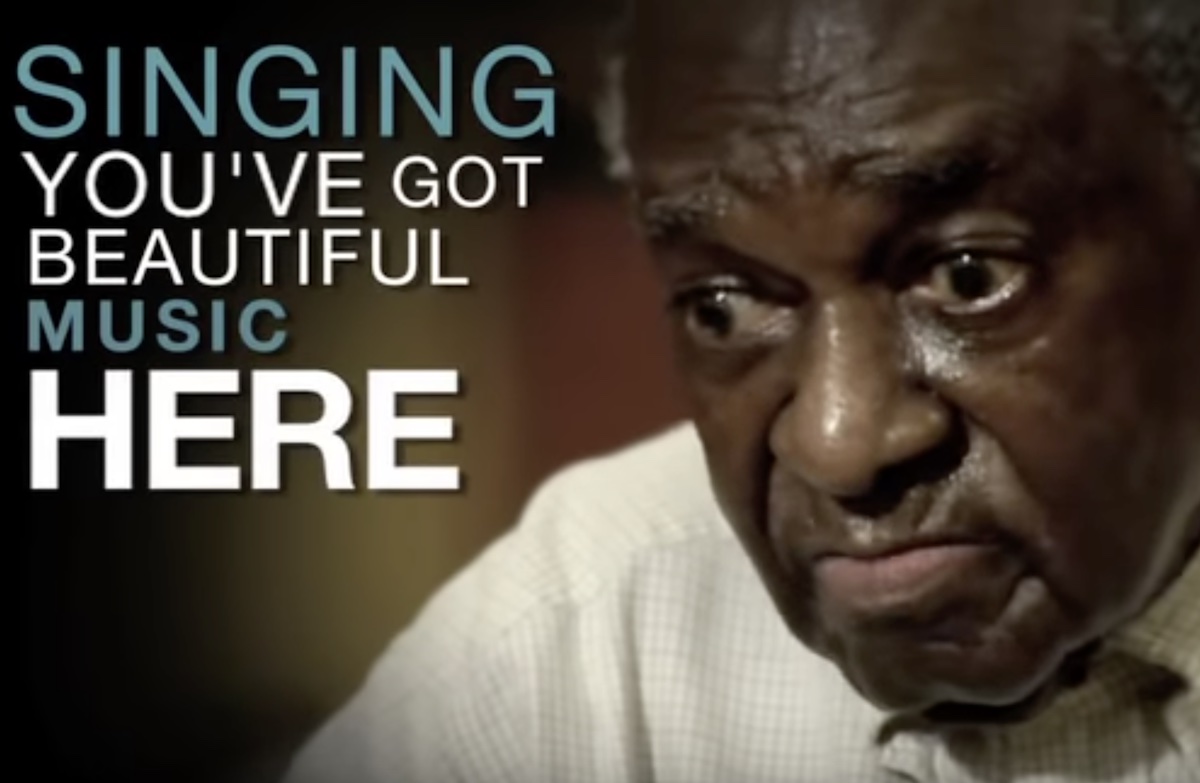Ten years and 50 million views ago, 92-year-old Henry Dryer’s message jolted us out of complacency. He single-handedly shattered the common misconception that dementia means you are no longer yourself, no longer “there.”
Largely unresponsive for years, he “lit up” when listening to a Cab Calloway song that prompted him to share his life story. Henry’s recorded experience led to the award-winning documentary Alive Inside and made tangible the profound benefits of hearing favorite music.
Why did this six-minute video that prompted 50,000 comments become the most viewed video on anything related to Alzheimer’s and dementia globally? It shattered the myth that there is no one there, that your personhood has vanished. Nothing could be further from the truth!
Even still, many are terrified by a dementia diagnosis. It scares off people who fear that their friend or family member is “gone.” Compounding that reaction, ageism runs deep. Add in cognitive changes to the stigma that often accompanies the diagnosis, and people act as if their loved one is no longer there.
Listen to persons with dementia speak, however, and they’ll tell you that we have it all wrong. True, they may swing between more and less clarity or brain fog from day to day, but it will probably be years until dementia becomes severe. We need to pay attention to their experiences and respect their personhood.
Personal Music Is Powerful “Medicine” for People with Dementia
What can music do? Plenty. The late Dr. Peter Davies, inventor of Aricept and Exelon, drugs that are often prescribed for dementia, observed that if only he could figure out how a medication could generate the same positive impact as personal music, it would quickly become a multi-billion-dollar blockbuster drug.
Wait a minute—you mean we have a medicine that delays, reduces, even prevents some of the symptoms of dementia? And that medicine is music? True, there is no cure for the disease. But we know that we can transform quality of life with regular access to the right music.
So, why is it that future healthcare professionals—doctors, nurses, social workers—typically receive minimal or no training on dementia care? Why are we not teaching young adults about dementia and how they can help by setting up someone with their favorite music? What a beautiful way to connect young and old that benefits both!
According to Manon Bruinsma, Director of Music & Memory in the Netherlands, the viral Henry video “has changed the idea of what we can do with people with dementia. It is now part of regular care. People are aware that music can work wonders with dementia.”
How to Change the Dementia Status Quo
Every family, long-term care setting, neurologist, psychiatrist, and geriatrician can make sure that each person in their care stays connected with their favorite music. But fewer than 10 percent of nursing homes make this happen. The CDC reports nursing home residents experience an average of 11 minutes of any kind of meaningful activity daily. That average for assisted living is 20 minutes. During the worst of the pandemic, most residents received zero meaningful activity, resulting in accelerated physical and mental decline.
What should we do? While many U.S. nursing homes strive to provide best-practice dementia care, the sad fact is that many others do not. With no solid guidance from the federal government requiring best-practice, non-pharmacological care for people with dementia, only those with either the means or determined leadership (or both) will get what they need.
We need to pay as much attention to each person’s psychosocial well-being as we do to their medications. Are people spending each day doing what they prefer, or does the schedule reflect what works best for the organization? No matter what, people will get their three meals a day and meds on time. Can we make the same guarantee that people have meaning, purpose, and quality social interactions every day?
Our happiness can be measured by the number of close friends we have. With age and dementia, music can spark interactions and help to grow relationships. One young woman, who clashed with her mother in recent years, found that when her mother heard a familiar song from an earlier time, they were able to make a breakthrough, reconnecting and establishing a better phase in their relationship.
A steady stream of research documents music’s ability to improve our mood, mobility, speech and appetite, as well as reduce depression, anxiety, pain, falls, brain fog, delirium, and, for those who care for us, caregiver stress.
Henry’s Impact on the Dementia Forefront
Like Henry, so often people who sit for months, even years without uttering a word, “awaken” to the music. People may dance or sing. The key is finding music that each individual loves, and the sooner, the better.
Henry’s legacy, his stand-alone video and starring role in the award-winning documentary Alive Inside, has had many ripple effects. Middle schools to medical schools continue to show Henry and Alive Inside as part of curricula. Music apps such as MemoryTracks, musiccare CONNECT, and Vera are all pushing the technology to deliver the right music to individual users with greater ease. Widely adopted programs such as Java Music Club, Music & Memory, and Singfit add a uniquely beneficial approach to quality of life in long-term care settings. Advocacy and collaborative efforts such as Music for Dementia in the UK and my own Right to Music strive to facilitate universal adoption.
Henry’s story counterbalances dementia’s fearsome reputation that has spread through the experiences of people like Glenn Campbell, Tony Bennett, Rosa Parks, Ronald Reagan, Sugar Ray Robinson, and Robin Williams. But we need to do more. And we can do more for all those who could use our help today. Music is one of the easiest ways to improve someone’s day.
Image: YouTube

